Desks come in all sorts of shapes, sizes and styles. How do you select or build the right one for you? Here’s a look at some of the main things to consider.
Photo by ViNull.
Ergonomics
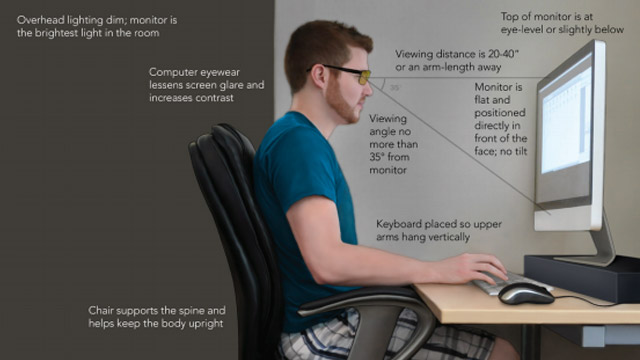
Even if you think all you need is a flat surface to prop your computer on, don’t ignore comfort and ergonomics when you’re selecting a desk or building one yourself. After all, you might be using it for hours at a time for several years.
Most desks are around 76cm high, which may be fine for the average person, but not everyone. If possible, try out your prospective desk in person, in a chair that’s similar to one you use. Make sure you have enough leg room and the desk is the right height. For the latter, bend your arms at 90-degree angles and see if your hands rest comfortably on the desk, whether it’s a sitting or standing desk. Desks with adjustable leg heights are more versatile for this purpose. Also, you can use Ergotron’s Workspace Planning Tool to find the proper measurements for either a sitting or standing desk based on your measurements.
You’ll also want to make sure that your chair can fit under the desk so you’re not sitting awkwardly several feet away from your keyboard. Consider measuring your chair’s width and height (up to the armrests) so you can avoid any surprises.
Finally, consider monitor placement. The monitor should be about an arm’s length away, so make sure the desk isn’t too deep or you might have wasted space behind the monitor.
Desk Shape

There are pros and cons to every kind of desk layout, whether you’re choosing a corner desk, L-shaped desk, U-shaped one or a traditional rectangular desk. Make sure you not only pick one that fits your workstyle and space, but may also be adaptable in case you want to move to a different room. Some desk layout considerations:
- An armoire, for example, works well in the bedroom or open spaces because you can close up the desk as the end of the day. However, they don’t offer a lot of surface space.
- U-shaped desks let you stretch out and create different work zones while keeping everything in reach, but they require lots of space.
- L-shaped desks offer many of the benefits of U-shaped ones while requiring less space. However, depending on the desk, you might be stuck with just one placement in your room.
- A corner desk is space saving and fits in different room layouts, but you’ll be stuck facing a corner, usually with your back to the door.
- Straight desks are the most common and versatile for placement (against a wall or in the middle of the room). They don’t always offer the most surface space, however.
Whichever shape you prefer, make sure you know the measurements of your room and the desk’s measurements so you can be sure the desk will fit properly and won’t impede traffic flow, etc.
Storage and Working Surface
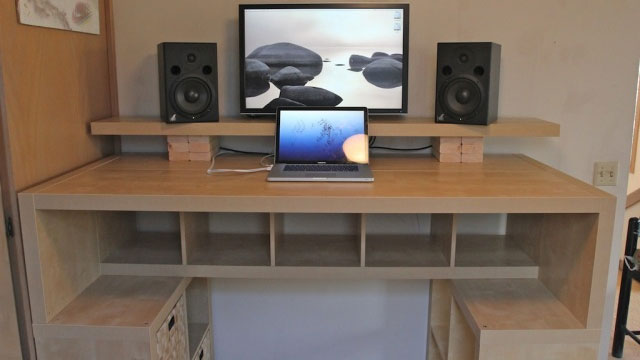
Some desks, frankly, are not very functional. They might be high in (minimalist) style, but low on storage and organisation — or vice versa.
Consider what you like or dislike about your current desk. Wish there were more drawers for your supplies? More surface space to accommodate multiple monitors? Think about what you’re going to place on the desk and how much of a messy desk person or neatnik you are.
Either way, though, Dell recommends selecting a desk with the most flat space possible for the size. Some other features to consider or look for include:
- A pull-out surface. This essentially turns a rectangular desk into an L-shaped one temporarily.
- Computer compartment. Some people like these because they tuck the desktop tower away, but on the other hand, these could cause airflow problems.
- Holes or channels for cords.
- Hutch. Built-in hutches offer a ton of storage, but when they’re attached to the desk they limit where you can place it and you’re stuck with the hutch.
- Drawer placement. Do you want them on the left or the right?
Construction and Quality
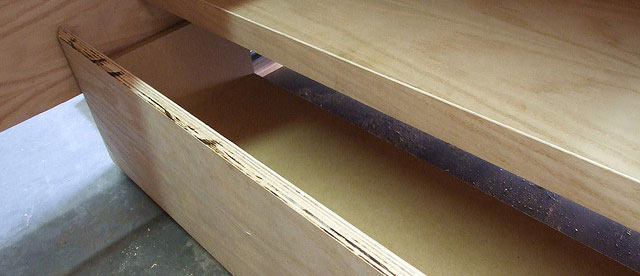
As for the actual material of the desk and its desk surface (wood or metal, etc), that’s largely a matter of style, although there are also practical considerations.
Material: Business Know How says that laminate is a popular choice because it’s affordable and durable, but you should look for a thick, high pressure laminate. (Very cheap laminate desks, I can attest, are not worth the money or trouble.)
Metal or steel desks are more durable. Test the overall quality of these kinds of desks, the article says, by feeling the desk’s overall weight.
Wood or veneer are a more classic choice but the surface nicks more easily.
Quality: To gauge the quality of a desk, look at the drawers. They should slide easily and the rollers should be sturdy. Business Know How also notes:
High quality wood drawers are assembled with an interlocking (dovetail) construction; this is stronger than drawers put together with just staples or glue. With a steel or metal desk, take a look at the drawers when they’re closed. If you see a gap where the drawer meets the desk, the desk is not set right.
Examine the corners and edges of a desk. You don’t want to see any fraying.
The desk warranty itself will give you a good idea of the quality, durability and life expectancy of a particular desk. Warranties typically range anywhere from a one-year limited to a lifetime warranty.
Style
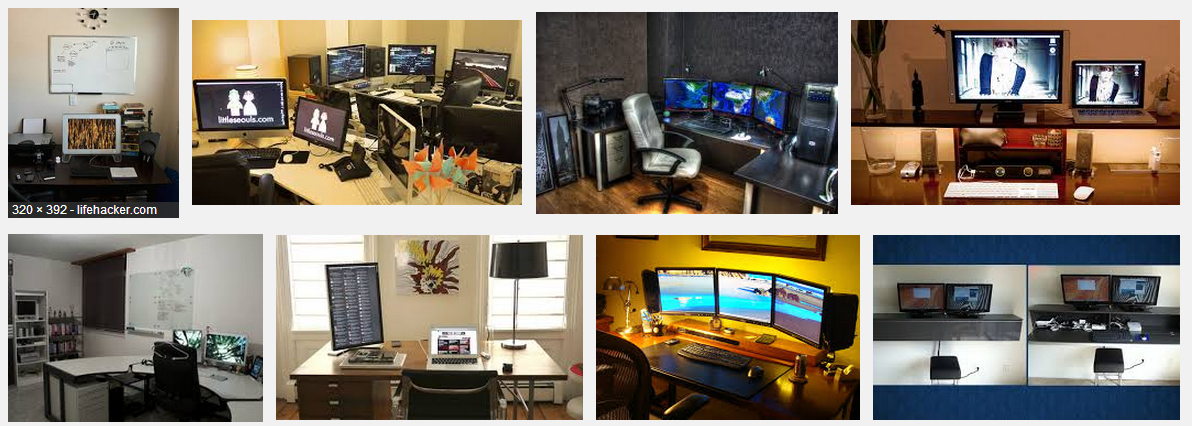
Last, but not necessarily least, is style. A workspace pleasing to the eye could help you be more productive, and the desk itself is usually the focal point of a workspace.
For ideas on different looks, check out our featured workspace series or browse Houzz’s photos of 4200 desks.
The DIY Approach
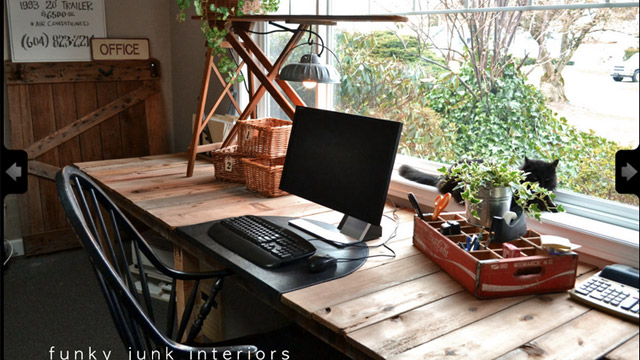
When we asked you guys how you decided on your desk, many responded by saying in good old Lifehacker fashion: “Just build it!” The benefit of this approach is the customisability and possible savings, but you need to be at least a little handy to do this well. (Although you can design your desk and have someone else build it.)
To get you started, here’s how to:
- Build your own ergonomic desk
- Make your own standing desk
- Create a height-adjustable desk
- Build an awesome cable-managed desk
- Build a U-shaped computer desk for under $US100
- Turn an IKEA Lack table into a standing desk for tiny spaces
- Build a space-saving folding desk
- Build a $50 corner desk
Enjoy!
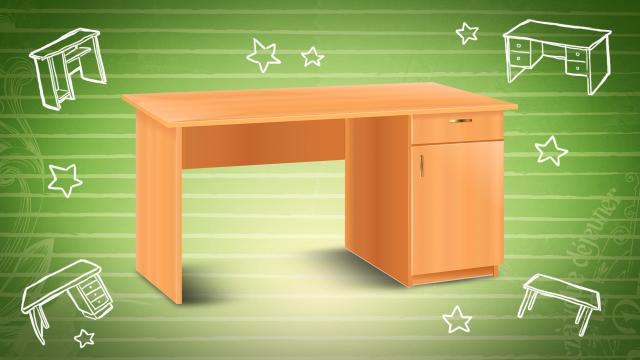
Comments
3 responses to “How To Choose (Or Build) The Perfect Desk For You”
More articles like this please
I love building stuff
I agree!
“Chair keeps body upright” is so wrong – you want at least 120 degrees between your thighs and back.
Upright means 90 degrees, which is awful.
I recently built a new desk for myself, and a couple of things I might mention:
– If you stretch out your legs while sitting down, make sure the desk is deep enough. Mine is 60cm deep (had to make it that way for space considerations) but it’s not deep enough; I keep hitting my feet on the backboard.
– Marine plywood is a great material, strong as anything. It looks pretty ugly though, so consider painting it.
– I’m in the middle of building an addon, which is a monitor stand for three monitors which has 6U of rack space (two racks of 3U each) between the desktop and the monitor stand – perfect for things like patch panels, switches and audio interfaces if you’re into that sort of thing (I am). I guess that’s the best thing about making your own desk – you can change it however you want afterwards!